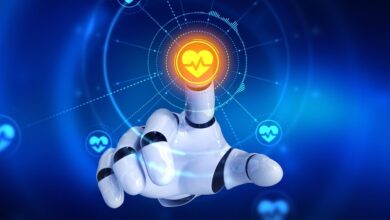A New Paradigm for Secure and Personalized Digital Services

Excitement is building among industry analysts over the promising fusion of generative artificial intelligence (AI) and the Internet of Things (IoT), technologies pivotal to the fourth and fifth industrial revolutions. Experts believe that by bringing these systems together, the safety of virtual services provided by businesses and institutions will significantly improve. Enthusiasts from the consulting world are also convinced that this combination will lead to enhanced customization of services for citizens and clients, a pressing need in the cutthroat digital ecosystem where competition spans from mass production to domestic niches.
An additional, and equally compelling, benefit identified by tech optimists is the improved ability to detect anomalies in the network of interconnected devices and tools. This advancement is underscored by professionals, including attendees of the 2024 Mobile World Congress in Barcelona, who note that recent breakthroughs enable devices to independently learn from their successes and failures. This learning process occurs without human intervention, representing a leap forward in autonomous machine learning.
Despite these exciting developments, there are hurdles to overcome, namely the collection and accurate labeling of vast data volumes—a task that requires meticulous training. Kenta Yasukawa, a co-founder of Soracom and a renowned expert, points out that such training is currently only accessible to a limited number of players. Engineers often use this data to simulate a host of scenarios to anticipate the system’s reaction in the event of machine failure.
Usage patterns hold such importance; they are integral in preventing future issues or delivering critical information to quickly resolve actual imbalances that, in another context, might be catastrophic. As with many technical endeavors, those involved place the utmost priority on promptly resolving any conflicts that arise.
Important Questions and Answers:
– What is Generative AI?
Generative AI refers to a subset of AI technologies that can generate new content, predict outcomes, or create data models by learning from existing datasets. It includes techniques like deep learning and neural networks to autonomously create text, images, or other media.
– How does IoT benefit from integrating with Generative AI?
Integrating IoT with Generative AI can lead to smarter and more efficient IoT systems. For example, AI algorithms could predict maintenance needs for IoT-connected machinery or optimize energy consumption in smart homes, providing personalized recommendations based on user behavior patterns.
– What are the key challenges associated with the convergence of Generative AI and IoT?
One of the major challenges is the need for extensive datasets and accurate data labeling, which can be resource-intensive. Additionally, there’s the complexity of implementing secure communication between devices and managing the interaction between AI and a multitude of IoT devices.
– What controversies are related to Generative AI and IoT?
Privacy and security are major concerns. With widespread data collection through IoT devices, ensuring the privacy and consent of individuals becomes challenging. Moreover, reliance on AI-generated decision-making could create ethical dilemmas, especially in contexts where human oversight is important.
Advantages:
– Enhanced Security: The use of AI can improve the detection of anomalies and security breaches in IoT networks.
– Personalization: Services can be tailored to individual needs and preferences, improving user experience.
– Predictive Maintenance: AI can predict when machines need maintenance before they break down, reducing downtime.
– Efficiency: Automating decision-making processes through AI can lead to more efficient systems and energy savings.
Disadvantages:
– Data Privacy Concerns: More data collection raises issues regarding user privacy and the potential misuse of personal data.
– Complexity: The integration of AI with IoT systems adds complexity to the development and maintenance of these systems.
– Accessibility: Advanced training in AI and access to vast computing resources are often required, which might limit the number of players in the field.
– Dependence on Technology: Increasing reliance on technology could lead to vulnerabilities if systems fail or are sabotaged.
Related Links:
For additional information about these technologies, consider visiting:
– IBM for insights on AI and IoT integration.
– Intel for information on IoT solutions and advancements.
– Nvidia for developments in AI processing hardware specifically designed to support AI workloads.
These entities are actively involved in the research, development, and application of AI and IoT technologies, making their insights valuable for understanding the current state and future direction of these converging fields.



